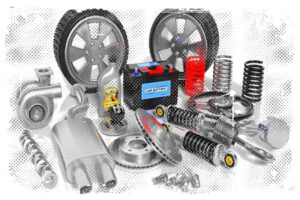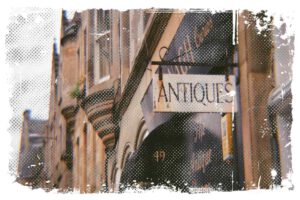I’m excited to announce that I’ll be participating in the “Auto Nostalgia” Expo in Warsaw, an event celebrating vintage and classic cars. As a car enthusiast, I couldn’t wait to be a part of this unique event. The expo will be like a living history lesson, allowing participants to travel back in time to their youth, their parents’ era, and even their grandparents’ time. It’s almost like a small time machine!

As I get ready for the expo, I’ve been learning about car restoration, and it’s a really interesting topic. Restoring a car isn’t just about bringing it back to its former glory – it’s about preserving a piece of history and creating something truly special. That’s why I wanted to write this article – to share my thoughts and provide some helpful insights I learnt.
What are Classic Cars?
Classic cars are all those old cars that have been maintained using original parts according to factory specifications. It is true that many components can still be purchased, but the cost, time, and limited availability can make the process challenging. As a result, many classic vehicles are refurbished using newer parts that have been manufactured according to the original specifications. The ultimate goal in restoring a classic car is to repair it and bring it to a condition where it looks and operates exactly as it did when it left the manufacturer.
Growing Popularity of Car Restoration in Poland
Classic car restoration gains increasing popularity these days. However these activities should only be carried out by professionals with extensive knowledge of the car’s construction as well as years of experience in restoration.
↳ PRO TIP: Do you like traveling? Then before you buy any ticket or book an attraction, check if it's available in this worldwide Viator Database. You may save a lot of money and time. No need to thank me :)
“Poland has become known in Europe as the kind of place that has good
mechanics, good specialists, and fairly reasonable prices.” I heard this
in one of the interviews given by Mr. Staniszewski, the owner of
classicparts.pl.
Over the past decade, the classic car market has experienced tremendous growth. In August 2017, a new record was set when an Aston Martin DBR1 from the 1950s was sold at auction for $22.55 million. In 2018 alone, around 30,000 classic American cars were imported to Europe, demonstrating the need for expert assistance in this rapidly-evolving market.
The value of investments in classic cars has greatly surpassed that of investments in coins, diamonds, and wines. This trend presents a great opportunity for Polish garages to specialize in restoring classic cars and jump into this market. Last year, more than 2,000 vintage vehicles were imported to Poland.
Which Cars are Considered Classic in Poland?
In Poland, the definition of a classic vehicle (samochód zabytkowy) is set forth in the Law on Road Traffic from 1997. According to this law, a vehicle can be considered a classic if it is registered in the register of historic monuments.
To be considered a classic car, a vehicle must meet certain requirements. Firstly, it must be a certain age and meet the following criteria:
- Be at least 30 years old
- The model must not have been manufactured for at least 15 years
- Have at least 75% original parts
An important requirement for a car to be considered a classic is that it must have at least 75% original parts. If it doesn’t have enough original parts, it won’t be considered a vintage car, but rather a replica. How do they know? An expert will examine the parts under the hood to determine if they are indeed original and issue a certificate accordingly.
There are some exceptions to the age requirement. In some cases, a younger vehicle may be considered a classic if the appraiser determines that it is historically significant,
Reconstruction Process by Specialists
Since I’m not an expert in car restoration, I’d like to share the principles of restoration that I learned at the Rzepecki Auto Garage. According to the specialists there, restoring antique cars is a very complex task that requires knowledge of historical car construction techniques, paint techniques, and more. These days, it is mainly done by enthusiasts and is hard to find in regular repair shops. It’s also worth noting that restoring cars can be a very educational experience.
Car restoration can be divided into the following stages:
- Disassembling the car and cleaning the body
- Body repair and priming
- Painting
- Engine and transmission repairs
- Mechanical and electrical repairs
- Restoring components – zinc plating, chrome plating, painting
- Upholstery repair
- Assembling the car
- Test drive and final tuning
Dismantling the Car
The first step in car restoration is disassembling the body. This is done in a way that preserves as many original parts as possible, in order to maintain the original character of the vehicle. Particular attention is paid to decorative elements and upholstery, as these play a big role in the visual appearance of the car. During each stage, the parts are carefully cataloged and described, and the work is documented.
Car Body Restoration
The next step in the restoration process is disassembling the smaller parts and the interior. This allows the team to work on the exterior of the car, as well as expose the internal mechanism. This method makes the process very efficient because different teams can work on the car at the same time.
Refurbishment of Parts
However, the most complex and time-consuming stage is the recovery and repair of the chassis and drivetrain parts. This involves repairing existing parts and finding replacements for missing or damaged ones. It is all needed in order to preserve the original character of the vehicle as much as possible. This work is usually done in specialized workshops and studios that focus on repairing specific parts. The final stage is putting the car back together and making adjustments.
Benefits of Restoring a Car in Poland
Buying vintage cars can be seen as an investment in alternative goods. If you know a lot about cars, you can tell which models, of what age, and with what features are most valuable. Sometimes you can buy an American vintage car for a low price and then sell it for three times more after doing a big renovation. This can be a good way to make a profit.
In Poland, the market for investing in vintage cars is still developing. According to the Samar Automotive Market Research Institute, approximately 2000 such cars are registered in Poland every year. Half of them are usually cars like Mercedes S or Ford Mustangs, which are considered iconic in this country. The direct benefit of finding a garage and restoring the car in Poland is definitely the fact, that we have cheaper specialists than in Western Europe. Also, according to statistics, Poles specialize in Mercedes, Ford, and Fiat restorations. They are simply the most popular classic cars on the market.
Is Car Restoration Profitable?
According to money.rp.pl, the return on investment in old cars is as high as 91% after 5 years and about 288% after 10 years of purchase. This makes antiques one of the best luxury investment products. Classics from the 1960s and 1970s, which have both good looks and comfort, are in high demand in the antique car market. What factors have the biggest impact on the price of an old car? Rarity and uniqueness are important, as are having the original engine, paint, and low mileage.
In Poland, Jaguars and old Mercedes are very popular. There are also fans of communist-era vehicles looking for “Trabants” and restored “Warszawas”. “Warszawa” is not common to be on the market in good condition because they were not produced in large numbers, and parts for these antique cars are not easy to find. By the way – please check my other article I wrote about all the car brands that are manufactured in Poland.
Cost of Car Restoration in Poland
There isn’t a fixed price for car restoration because it depends on the quality of the work, attention to detail, and materials used, such as upholstery, paint, and replacement parts. Classic cars may have had many “adventures” over their long lives that are not immediately visible. They might be hidden under layers of paint or be hard to see without completely disassembling the car. Initial estimates are usually given by shops as a range of prices for a given stage of restoration.
To determine the price of a car, specialists try to assess its condition first. They often use the following classification:
- Class Ia- a fully original and fully functioning vehicle
- Class Ib- a partially inoperable vehicle, running, and fully original
- Class Ic- a fully original, inoperable vehicle
- Class IIa- a fully functioning vehicle with minor deficiencies or minor non-original parts
- Class IIb- a partially inoperable, running vehicle with minor deficiencies or minor non-original parts
- Class IIc- an inoperable vehicle with minor deficiencies or minor non-original parts
- Class IIIa- a vehicle in good working order, but with serious deficiencies or minor non-original parts
- Class IIIb- a partially inoperable, running vehicle with serious deficiencies or major non-original parts
- Class IIIc- an inoperable vehicle with serious defects or significant non-original parts
These classes divide cars into three main categories:
- Category 1- Collector vehicles that are less than 3 years old, but valuable because of their rarity or special design
- Category 2- Antique vehicles that are more than 30 years old, but not older than 57 years
- Category 3- Antique vehicles that are road veterans, over 57 years old
The final price for each stage depends on the time spent on the car and is calculated by multiplying this time by the cost of labor per hour.
The average labor cost per hour is 140 PLN incl. VAT in Poland. (30 USD incl VAT)
It is difficult to say “in advance” how much a specific car restoration might cost. The more accurate cost can only be determined after the car is disassembled.
Nowadays, even the simplest restoration can cost at least 60,000 zlotys. (approx 13,500 USD)
Fiat 125p Renovation Cost Example
Here is an example of a restoration. The car restoration company stated that the work cost the owner of the vehicle 75,000 PLN (approx 17,000 USD).
You can go directly to the workshop site and see photos here.
Frequently Asked Questions
Here are some answers to the most common questions around this topic.
Top 10 most popular vintage car brands are:
- Mercedes
- Ford
- Fiat
- Chevrolet
- BMW
- Volkswagen
- Audi
- Jaguar
- Volvo
- Cadillac
Top 10 most popular vintage cars in the last years:
- Mercedes S-Class
- Mercedes E-Class
- Ford Mustang
- Mercedes SL
- Chevrolet Corvette
- Volkswagen Golf
- Jaguar XJ
- BMW 3-series
- Mercedes C-class
- Fiat 126p
What is the difference between a classic vehicle and a historic vehicle?
Classic and historic vehicles are often confused with one another (in Poland), but there are some key differences between the two. One main difference is that an classic vehicle must be registered, while a historic vehicle does not. In general, every historic vehicle is considered a classic, but not all classic vehicles are considered historic. This distinction is determined by the Law on Compulsory Insurance in Poland. While a historic vehicle may be operated with standard license plates, an classic vehicle typically requires special registration plates (yellow).
Can a Classic Vehicle be Sold?
Yes, a classic vehicle can be sold just like any other vehicle. There are no special rules or restrictions that apply specifically to the sale of classic vehicles. The owner of a such vehicle is free to sell it in the same way that they would sell a regular car, and the process for transferring ownership is the same as well.
Can a LPG (liquefied gas)-powered car be classified as a classic vehicle?
Yes, a car with a gas installation can be considered a classic vehicle as long as 75% of the original parts of the vehicle are preserved. According to the regulations, it does not matter which specific parts of the car have been updated or modified with more modern features. As long as the majority of the original parts are still installed and are in good condition, the car may still be classified as a classic vehicle.
Bibliography:
- https://speedshopandkustoms.pl/
- https://warsztat.pl/artykuly/renowacja-aut-po-polsku,46057
- http://rzepeckiauto.pl/
- https://robimyklasyki.pl/2022/05/30/zasady-renowacji-samochodow-zabytkowych-o-czym-nalezy-pamietac/
- https://klassikauto.pl/ile-kosztowala-renowacja-tego-fiat-125-p-rocznik-1968-silnik-1300-cm3/
- https://isap.sejm.gov.pl/isap.nsf/download.xsp/WDU20130000337/O/D20130337.pdf



